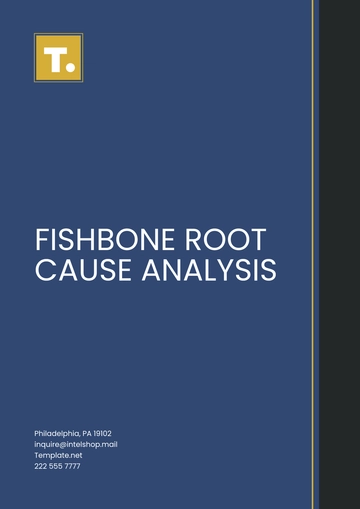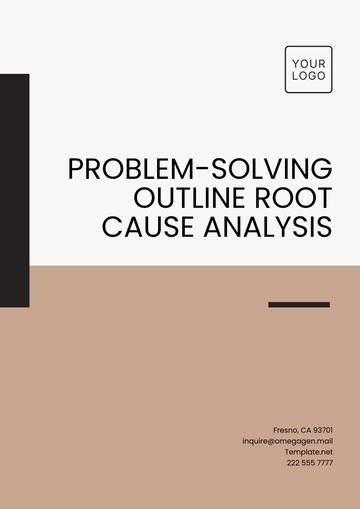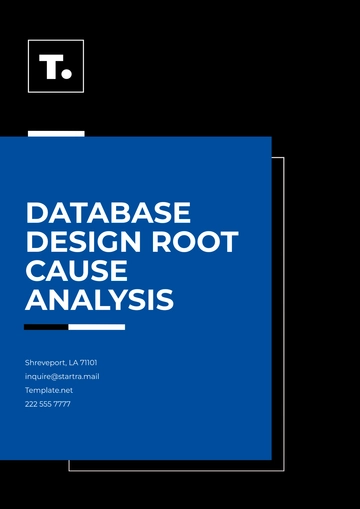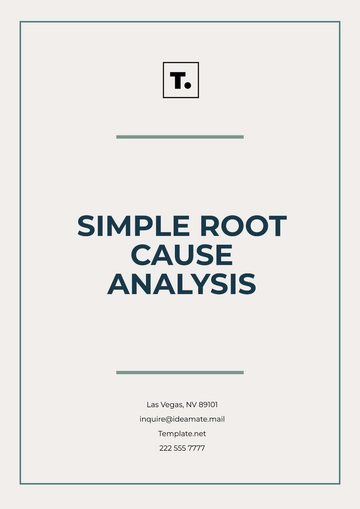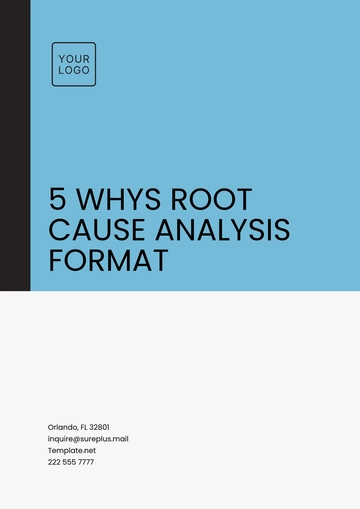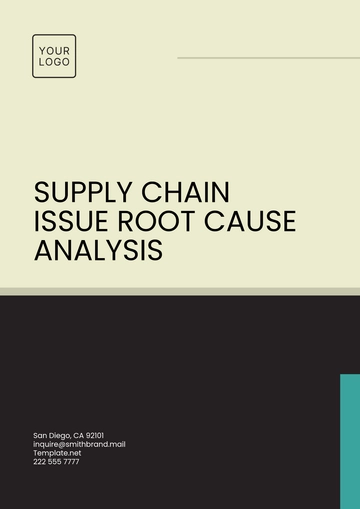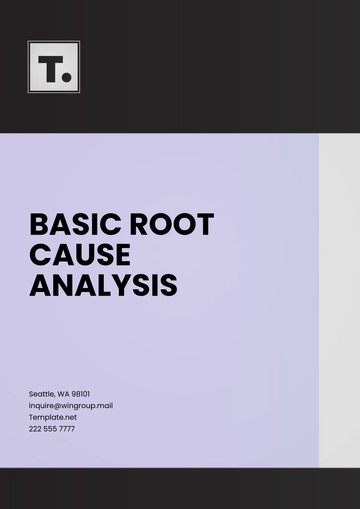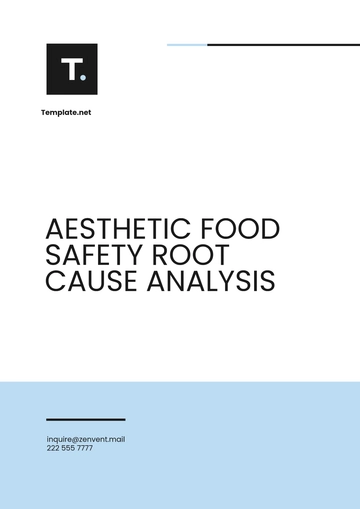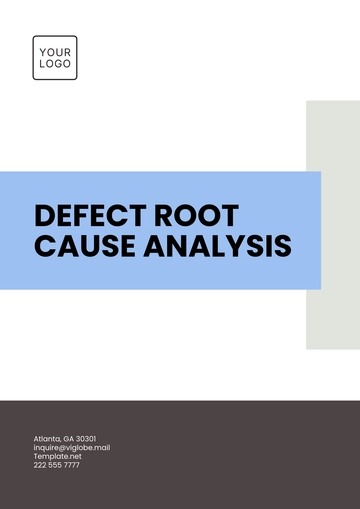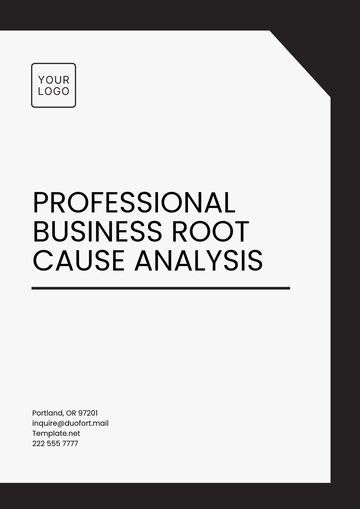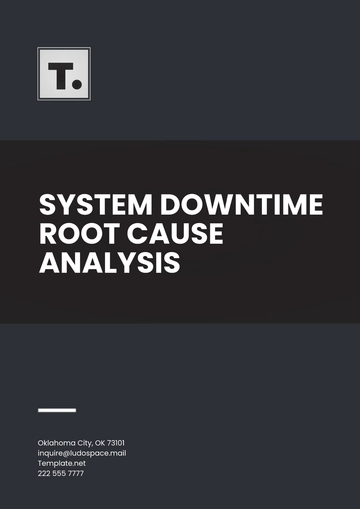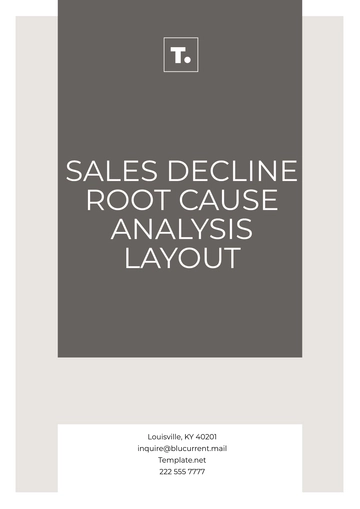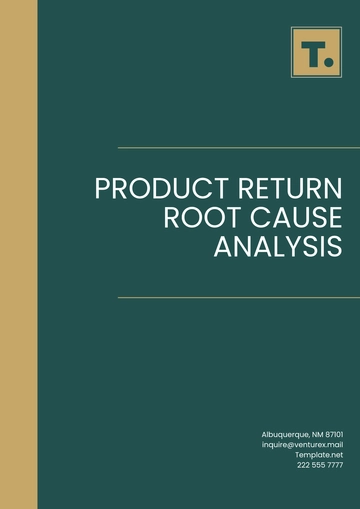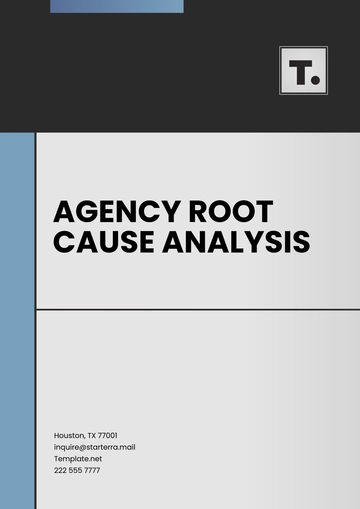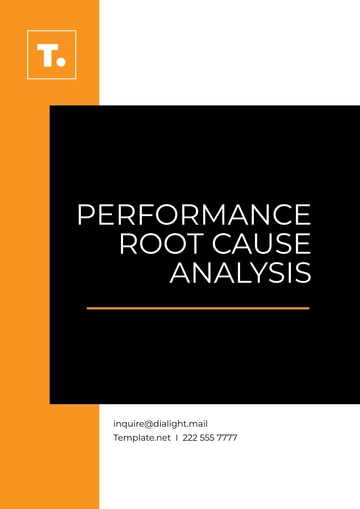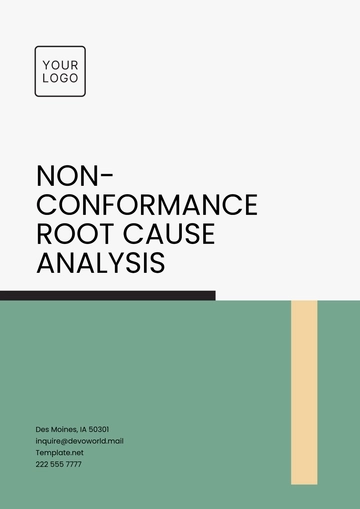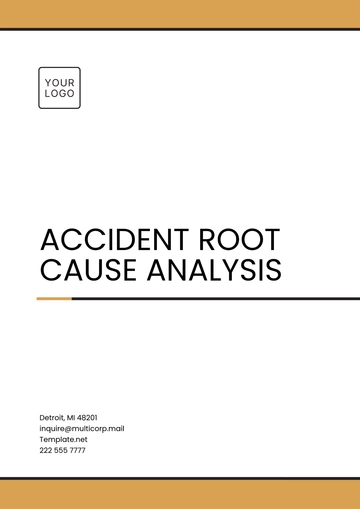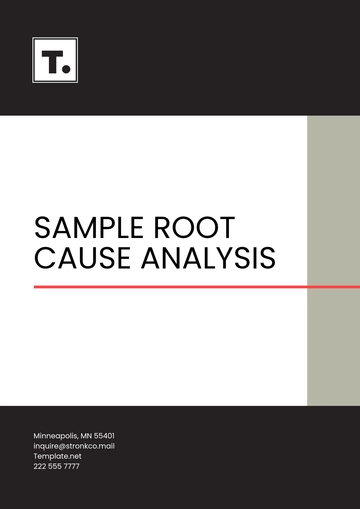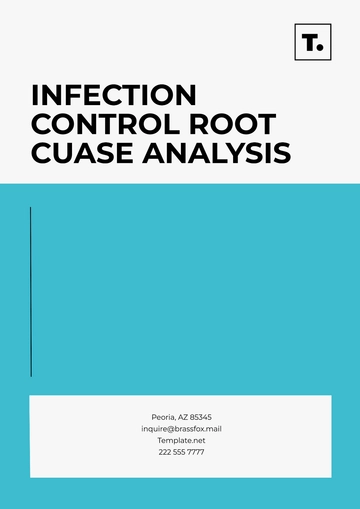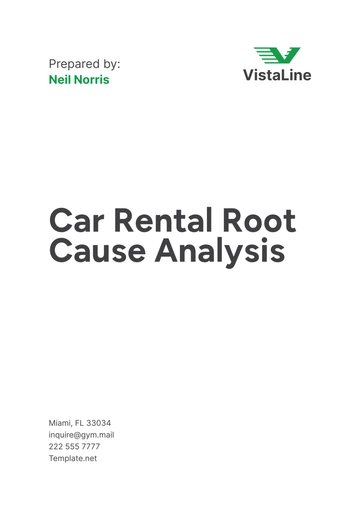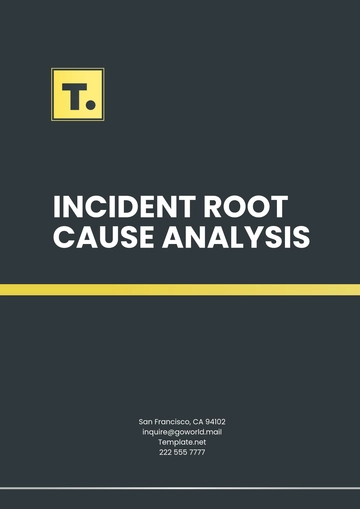Free Comprehensive Commission and Bonus Analysis HR
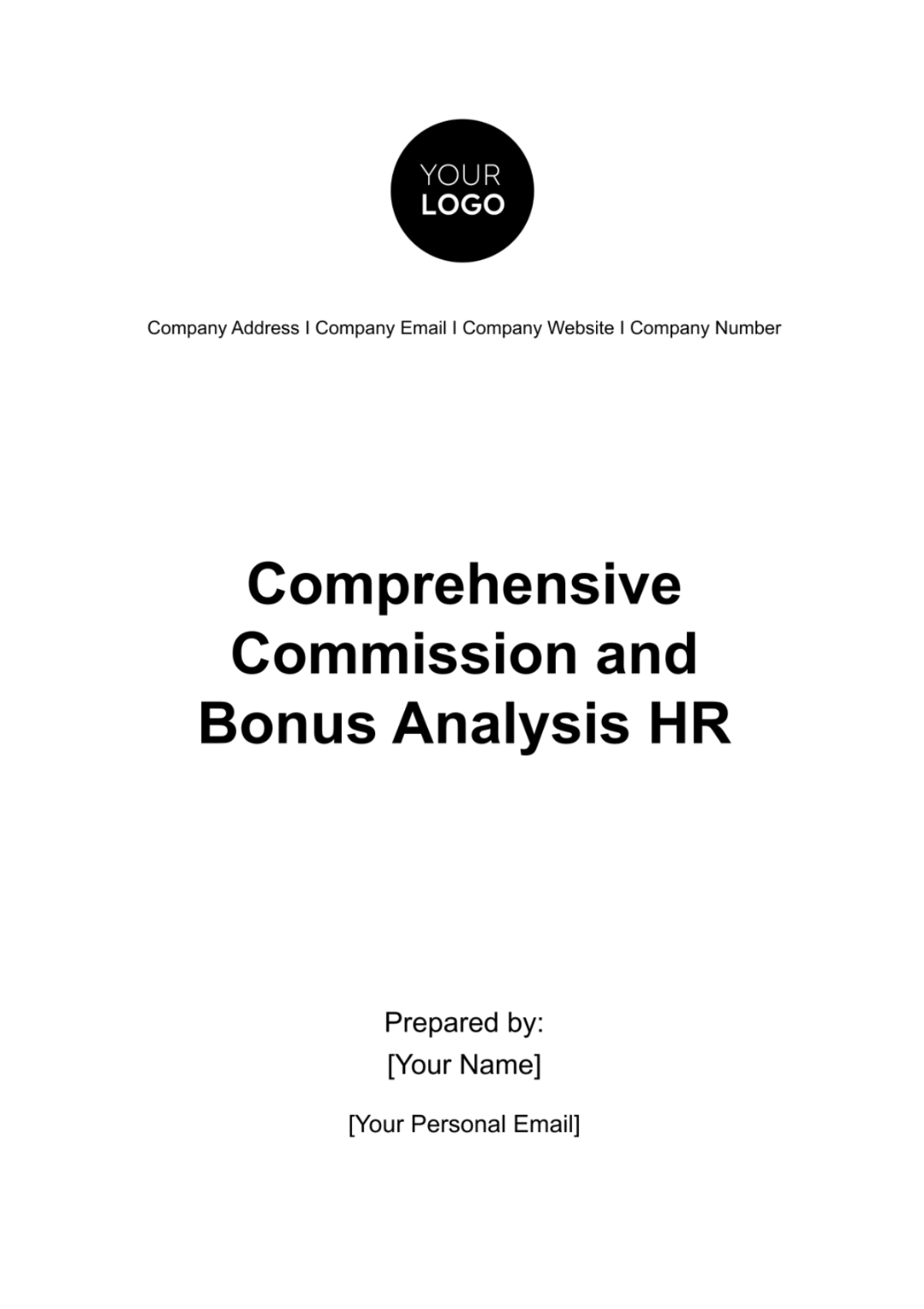
I. Executive Summary
Our Comprehensive Commission and Bonus Analysis represents a meticulous exploration of [Your Company Name]'s current compensation framework, meticulously conducted by our team of experts. With the primary objective of optimizing commission and bonus programs, our analysis seeks to invigorate employee motivation, ensure alignment with organizational goals, and secure a competitive edge in the marketplace.
II. Key Findings And Recommendations
In this endeavor, we embarked on a multifaceted evaluation, spanning the spectrum of your compensation structure. Our analysis included a thorough review of existing commission and bonus structures, a comparative benchmarking against industry standards, an exhaustive assessment of fairness and equity considerations, a meticulous cost analysis, an evaluation of incentive alignment with strategic objectives, scrutiny of communication and transparency practices, and a rigorous examination of legal and regulatory compliance.
Compensation Structure Evaluation
This pivotal phase of our analysis involved a granular examination of the very bedrock of your compensation system. We meticulously reviewed the architecture of your commission and bonus structures, leaving no stone unturned in our quest for comprehensive insights. The evaluation encompassed the following facets:
Structure And Formulas
We dissected the intricate structures and mathematical formulas underpinning your commission and bonus calculations. This involved a detailed analysis of how performance metrics and targets interplay with compensation, ensuring clarity and accuracy.
Eligibility Criteria
Beyond mere calculations, we scrutinized the eligibility criteria for commission and bonus programs. Our assessment considered factors such as tenure, job roles, and performance thresholds, seeking alignment with your organizational objectives.
Performance Metrics
A key focal point was the identification and evaluation of the performance metrics directly tied to commissions and bonuses. We assessed the relevance of these metrics to your company's strategic goals and explored potential enhancements to ensure they drive the desired behaviors and outcomes.
Comparative Analysis
To provide context, we compared your compensation structure against industry best practices, seeking areas where adjustments or innovations may be warranted to maintain competitiveness and attraction of top talent.
Historical Analysis
We analyzed historical data related to your compensation structure, identifying trends, patterns, and any anomalies that may inform our recommendations for improvements or refinements.
Employee Perceptions
Employee perceptions of the existing compensation structure were captured through surveys and interviews. Their insights provided a valuable qualitative dimension to our analysis, helping us understand how the structure impacts morale and motivation.
III. Competitiveness Assessment
Our Competitiveness Assessment delves deep into the heart of [Your Company Name]'s compensation structure, scrutinizing its alignment with industry standards and its potential to attract and retain top-tier talent. In this section, we present a comprehensive evaluation of your organization's compensation competitiveness:
Industry Benchmarking
To gauge the competitiveness of your compensation plan, we meticulously compared it against industry benchmarks, encompassing not only your specific sector but also regional and national data where applicable. Our benchmarking process involved a thorough examination of industry best practices and trends.
Position-Specific Analysis
Our assessment considered various positions within your organization, ranging from entry-level roles to executive positions. Each role was analyzed in terms of its compensation package, taking into account factors such as job responsibilities, experience, and market demand.
Total Rewards Package
We examined the entire total rewards package, including base salary, commissions, bonuses, benefits, and non-monetary incentives. This holistic view provides insights into the overall competitiveness of your compensation offerings.
Talent Attraction And Retention
Our analysis sought to answer critical questions related to talent attraction and retention. Are your compensation packages appealing enough to attract top talent in a competitive job market? Are they sufficient to retain your current high-performing employees? Our findings shed light on these crucial considerations.
Regional And Global Considerations
In today's interconnected world, organizations often operate in diverse regions or have global talent pools. We factored in regional variations in cost of living, market dynamics, and talent availability to ensure that your compensation packages remain competitive across different geographies.
Employee Perceptions
We conducted surveys and interviews with your employees to gain insights into their perceptions of your compensation plan's competitiveness. Their feedback provided invaluable qualitative data to complement our quantitative analysis.
IV. Fairness And Equity
Our examination of fairness and equity within your compensation structure represents a cornerstone of our analysis, acknowledging the critical role that equity plays in fostering a motivated and content workforce. We conducted an exhaustive assessment to gauge how compensation is distributed across various roles, departments, and levels within [Your Company Name], with the ultimate goal of ensuring that all employees are treated equitably.
Key Considerations:
Role-Based Equity
We examined compensation levels relative to job roles and responsibilities to ascertain whether employees with similar job functions receive comparable remuneration. Disparities in pay based on job roles were identified and analyzed.
Departmental Equity
Departmental disparities in compensation were scrutinized to identify potential areas where certain departments might be at a disadvantage or advantage in terms of compensation. This aspect of the analysis helped pinpoint opportunities for equalization.
Gender And Diversity Analysis
In line with diversity and inclusion efforts, we conducted an in-depth examination of compensation data with respect to gender and diversity factors. This critical evaluation was aimed at identifying any pay gaps or disparities that may exist within [Your Company Name].
Performance-Based Equity
We assessed whether high-performing employees are appropriately rewarded for their contributions and whether compensation is directly tied to performance metrics. Equity in performance-based rewards was a focal point of our evaluation.
Tenure-Based Equity
The length of service with the organization often impacts compensation. We analyzed whether employees with similar levels of tenure receive comparable compensation packages.
V. Cost Analysis
Our comprehensive analysis extended to a meticulous examination of the financial aspects of your compensation plan. This in-depth assessment not only unveiled the current cost structure but also delved into the intricacies of budgeting and the long-term sustainability of your compensation program.
Key Focus Areas:
Cost Breakdown
We meticulously dissected the expenses associated with your compensation plan, breaking down the costs by components such as base salaries, commissions, bonuses, and benefits. This granular analysis provides a clear picture of where financial resources are allocated within your organization.
Budget Allocation
Evaluating the allocation of budgetary resources is crucial in ensuring that compensation expenses align with your strategic goals. Our analysis sought to determine if resources were allocated optimally, considering the varying needs of different departments and roles within the company.
Cost Projections
Beyond the current fiscal year, we projected the potential cost implications of your compensation plan over multiple years. These projections take into account factors such as anticipated growth, changes in workforce composition, and the evolving competitive landscape. This forward-looking analysis aids in planning for the long-term financial sustainability of your compensation program.
Benefits Assessment
In addition to direct monetary costs, we also examined the non-monetary benefits and perks provided as part of your compensation plan. This assessment helps gauge the overall value proposition offered to employees and can inform decisions about adjusting benefit offerings.
Benchmarking Cost Efficiency
To provide a broader perspective, we benchmarked your compensation costs against industry standards and peer organizations. This comparison sheds light on whether your compensation expenditures are in line with market norms and whether there are opportunities for cost optimization.
ROI Analysis
We conducted a return on investment (ROI) analysis to measure the effectiveness of your compensation program in terms of employee performance, retention, and overall organizational success. This analysis helps determine whether the financial resources allocated to compensation are generating the desired outcomes.
Cost Reduction Strategies
Based on our findings, we identified potential cost reduction strategies that do not compromise the quality or competitiveness of your compensation plan. These strategies may include optimizing bonus structures, revising benefit offerings, or implementing performance-based cost controls.
Sustainability Measures
To ensure the long-term sustainability of your compensation plan, we outlined specific measures and recommendations. These measures encompass cost containment strategies, risk mitigation strategies, and a proactive approach to addressing potential financial challenges.
VI. Incentive Alignment
In our meticulous analysis, we placed particular emphasis on the alignment of incentives with [Your Company Name]'s strategic objectives and overarching mission. This crucial aspect of compensation planning directly impacts employee motivation, productivity, and the realization of corporate goals.
Key Focus Areas And Recommendations
Alignment With Strategic Objectives
Our analysis examined the degree to which your current commission and bonus structures align with the strategic goals of the organization. We assessed whether these incentives effectively encourage behaviors and outcomes that contribute to the company's long-term success. To enhance alignment:
We recommend conducting a comprehensive review of your strategic objectives to ensure they are up-to-date and clearly defined.
Consider revising commission structures to emphasize key performance indicators directly tied to strategic priorities.
Performance Metrics
We scrutinized the performance metrics employed for determining commissions and bonuses. These metrics are the backbone of incentive programs, and their alignment with strategic objectives is paramount. Our recommendations in this regard include:
Aligning performance metrics with the specific goals outlined in your strategic plan.
Ensuring that the selected metrics are clear, measurable, and directly influence the desired outcomes.
Timeliness And Frequency Of Payouts
We evaluated the timing and frequency of commission and bonus payouts. Ensuring that rewards are distributed promptly and in a manner that reinforces strategic alignment is essential. Our suggestions include:
Reviewing the timing of bonus payouts to coincide with milestone achievements and strategic milestones.
Considering more frequent or variable commission payouts for real-time recognition of exceptional performance.
Communication Of Strategic Alignment
Effective communication of how commissions and bonuses relate to strategic objectives can significantly impact employee understanding and motivation. We recommend:
Enhancing communication strategies to clearly articulate the connection between individual performance and the company's strategic goals.
Providing regular updates and reminders to keep the alignment between incentives and objectives at the forefront of employees' minds.
Continuous Monitoring And Adaptation
To ensure sustained alignment with evolving strategic priorities, we propose the implementation of a robust monitoring and adaptation process. This includes:
Regularly reassessing the alignment of incentive structures with strategic goals, especially in the face of changing market conditions.
Encouraging feedback from employees to identify any disconnects between incentives and strategic alignment.
Our overarching goal is to fortify the alignment between your compensation plans and [Your Company Name]'s strategic vision. By implementing these recommendations, you can instill a heightened sense of purpose among employees and cultivate a results-driven culture that harmonizes individual efforts with organizational success.
VII. Legal And Regulatory Compliance
Our scrutiny of your compensation plan extended to a meticulous examination of its alignment with pertinent labor laws, industry regulations, and compliance standards. This aspect of the analysis is essential in safeguarding your organization from potential legal issues and liabilities. Here are the key aspects we addressed:
Labor Laws And Regulations
We conducted a thorough review of your compensation plan to ensure it complies with federal, state, and local labor laws and regulations. This includes adherence to minimum wage laws, overtime regulations, and any other pertinent employment laws specific to your region.
Anti-Discrimination Laws
Our analysis considered compliance with anti-discrimination laws, including those related to gender, race, age, and disability. Ensuring that your compensation practices are free from discriminatory elements is crucial in maintaining a fair and legally compliant environment.
Tax Implications
We assessed the tax implications of your compensation plan to ensure that it aligns with tax regulations, withholding requirements, and reporting obligations. This helps prevent issues with tax authorities and ensures employees are aware of their tax liabilities.
Bonuses And Bonuses Clawbacks
If your organization employs clawback provisions for bonuses (i.e., the ability to recover bonus payments under certain circumstances), we reviewed the implementation and legality of such provisions in your compensation plan.
Contractual Agreements
In cases where employment contracts or agreements are in place, we ensure that the compensation plan is consistent with the terms outlined in these contracts and that any modifications align with contractual obligations.
Compliance Reporting
We examined whether your organization has the necessary reporting mechanisms in place to meet compliance requirements. This includes record-keeping, reporting to relevant government agencies, and maintaining documentation related to compensation decisions.
Employee Notifications
Compliance also extends to informing employees about their rights and entitlements. We assessed whether your organization provides clear and legally required notifications to employees about compensation-related matters.
Review Of Policies And Documentation
We reviewed your compensation policies and related documentation, including employee handbooks and manuals, to ensure that they accurately reflect current practices and legal requirements.
Potential Legal Risks
Any potential legal risks identified during the analysis were highlighted, along with recommendations to mitigate these risks and bring your compensation plan into compliance.
By meticulously addressing these legal and regulatory aspects, our analysis aims to provide your organization with the necessary safeguards to operate within the bounds of the law while maintaining a competitive and attractive compensation structure.
VIII. Employee Feedback
Throughout our analysis, we placed a significant emphasis on incorporating the invaluable feedback received from your employees. We conducted surveys, focus groups, and one-on-one interviews to ensure that the voice of your workforce was heard and considered in crafting these recommendations. Here are some key insights derived from this vital feedback:
Employee Satisfaction
Employees expressed varying degrees of satisfaction with the current compensation plan. Some highlighted its effectiveness in motivating them, while others pointed out areas of concern.
Fairness Concerns
Several employees raised concerns about perceived disparities in compensation among different roles and departments. Addressing fairness and equity in compensation was a recurring theme in their feedback.
Performance Metrics
Employees shared their perspectives on the relevance and achievability of performance metrics. Some felt that certain metrics needed refinement to better reflect their day-to-day responsibilities and contributions.
Communication Effectiveness
Employees provided feedback on the effectiveness of communication related to the compensation plan. Some expressed a desire for more frequent updates and clearer communication channels.
We firmly believe that the implementation of these proposed changes will pave the way for a more potent, competitive, and employee-centric compensation structure for [Your Company Name], supporting your organizational objectives and fostering enhanced employee satisfaction. Should you have any questions or require further guidance in implementing these recommendations, our team stands ready to provide unwavering support.
- 100% Customizable, free editor
- Access 1 Million+ Templates, photo’s & graphics
- Download or share as a template
- Click and replace photos, graphics, text, backgrounds
- Resize, crop, AI write & more
- Access advanced editor
Discover unparalleled HR efficiency with Template.net's Comprehensive Commission and Bonus Analysis HR Template. Editable and customizable, this cutting-edge tool empowers HR professionals to optimize commission structures effortlessly. Enhanced with an AI Editor Tool, streamline your analysis process for fairer, more rewarding incentives. Maximize productivity and fairness with this indispensable resource.
